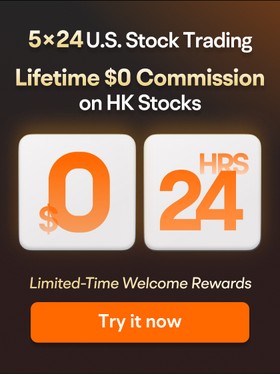Description of the event
On August 31, Aero Energy released its semi-annual report. H1 achieved operating income of 1.58 billion yuan, a year-on-year net profit of 0.1 billion yuan, or -89.4% year-on-year; 24Q2 achieved revenue of 0.9 billion yuan, or -37.0% year-on-year, +31.4% month-on-month, and achieved net profit of 0.07 billion yuan, -85.4% year-on-year, and +103.3% month-on-month.
Incident reviews
 Performance was in line with expectations, and gross margin declined slightly. Affected by channel inventory backlog and competition in the same industry, H1 revenue was -53.4%; net profit was -89.4% year-on-year due to the increase in company size and R&D investment; the company continued to increase investment in R&D, develop new products, technological innovation, and introduce R&D talents, while operating income decreased year-on-year, with R&D investment accounting for 15.0% of revenue, +11.5pct year over year; H1 sales expenses were +21.4% year-on-year, representing the company's new market expansion and increased investment. The company's gross margin in the first half of the year was 38.3%, a year-on-year decrease of 2.5 pct. This is due to changes in the company's product structure, an increase in the share of shipments in emerging markets, and its gross margin is lower than that of the European market.
Performance was in line with expectations, and gross margin declined slightly. Affected by channel inventory backlog and competition in the same industry, H1 revenue was -53.4%; net profit was -89.4% year-on-year due to the increase in company size and R&D investment; the company continued to increase investment in R&D, develop new products, technological innovation, and introduce R&D talents, while operating income decreased year-on-year, with R&D investment accounting for 15.0% of revenue, +11.5pct year over year; H1 sales expenses were +21.4% year-on-year, representing the company's new market expansion and increased investment. The company's gross margin in the first half of the year was 38.3%, a year-on-year decrease of 2.5 pct. This is due to changes in the company's product structure, an increase in the share of shipments in emerging markets, and its gross margin is lower than that of the European market.
Q2 Shipments in a single quarter increased significantly from month to month. In terms of shipments, 24H1 energy storage batteries were shipped about 327 MWH, energy storage inverters were shipped about 0.06 million units, and grid-connected inverters were shipped about 0.17 million units; of these, Q2 energy storage inverters shipped about 0.0377 million units, +69.1% month-on-month, and Q2 grid-connected inverters shipped about 0.1222 million units, +155.6% month-on-month in Q2. In terms of production capacity, the main construction of the second phase of the R&D and production project for 2 GWH energy storage batteries and 1 million photovoltaic inverters per year has been completed.
The company has perfect channels, rich customer resources, and actively explores new markets. The company sells its products to more than 80 countries, has established a complete channel network and product service system, and has rich customer resources, including well-known companies in the industry, such as Hanwha Group, the world's leading supplier of photovoltaic modules and products, Krannich, the leading provider of the European photovoltaic industry, and Segen, the largest provider of photovoltaic products in the UK. The overseas market certification cycle is long, and the company's products have obtained more than 1100 domestic and international certifications. The company actively promotes the development of new markets such as Pakistan, Ukraine, and South Africa, and sales are growing rapidly. Lay out industrial and commercial energy storage products, launch a variety of models, and successfully achieve sales.
Investment advice
The company's 2024-2026 EPS is expected to be 2.60\ 4.44\ 5.27, respectively, and 2024-2026 net profit is 4.2\ 7.1\ 0.84 billion yuan respectively, corresponding to the company's closing price of 54 yuan on September 24, and PE 20.8\ 12.2\ 10.2 for 2024-2026, respectively. Considering the company's leading overseas layout, rich customer resources, strong product strength and R&D strength, it is recommended to release production capacity in the future, and continue to explore new markets, and it is recommended to buy, considering the company's current The valuation was slightly higher, giving it a risk rating of “B”, so it was covered for the first time, giving it a “buy-B” rating.
Risk warning
(1) The release of the company's new products falls short of expectations: if the company's new products are not shipped as planned, or the market expansion does not go smoothly, there may be situations where the shipment volume falls short of expectations, affecting the company's revenue and profits; (2) Increased industry competition: competition in the energy storage industry is fierce. If competition in the industry intensifies in the future, or the prices of upstream raw materials fluctuate, it may affect the company's gross profit margin; (3) Policy changes in overseas countries may adversely affect the company's overseas sales; (4) Downstream demand falls short of expectations: if downstream demand and expectations do not meet expectations, then for the company Shipments and business performance were adversely affected.


 业绩符合预期,毛利率小幅下降。受到渠道库存积压和同行业竞争影响,H1 营收同比-53.4%;由于公司规模和研发投入增加,营收同比下降,因此净利润同比-89.4%;公司持续加大研发投入,开发新产品、技术创新、引进研发人才,同时营业收入同比减少,研发投入占营收比例15.0%,同比+11.5pct;H1 销售费用同比+21.4%,系公司新市场拓展、加大投入。公司上半年毛利率为38.3%,同比下降2.5pct,系公司产品结构变化,新兴市场出货占比提升,其毛利率比欧洲市场较低所致。
业绩符合预期,毛利率小幅下降。受到渠道库存积压和同行业竞争影响,H1 营收同比-53.4%;由于公司规模和研发投入增加,营收同比下降,因此净利润同比-89.4%;公司持续加大研发投入,开发新产品、技术创新、引进研发人才,同时营业收入同比减少,研发投入占营收比例15.0%,同比+11.5pct;H1 销售费用同比+21.4%,系公司新市场拓展、加大投入。公司上半年毛利率为38.3%,同比下降2.5pct,系公司产品结构变化,新兴市场出货占比提升,其毛利率比欧洲市场较低所致。






Comment(0)
Reason For Report